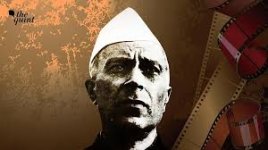The clock struck midnight, the world slept, and India awoke. But awakening is merely the first step after a long slumber. The real work begins with building the day, brick by painstaking brick. And for independent India, the chief architect sketching the initial blueprints, laying the foundation stones, and often getting his hands dirty in the process, was Jawaharlal Nehru. More than just a Prime Minister, he was the philosophical lodestar guiding a nation finding its feet after centuries of colonial rule. His vision wasn't a simple picture; it was a complex, sometimes contradictory, tapestry woven from global ideals and Indian realities.
The Blueprint: A Socialist Pattern of Society
Nehru looked at India, vast and impoverished, and saw that unfettered capitalism wasn't the answer to lift millions out of destitution quickly. Having witnessed the Soviet experiment and admired aspects of British socialism, he championed a 'socialist pattern of society'. This wasn't about abolishing private property entirely – he wasn't that revolutionary – but about the state playing a commanding role in the economy. Think Five-Year Plans, large public sector undertakings (PSUs), and control over key industries. The idea was to direct resources towards rapid industrialization and reduce inequality. It was like deciding the government needed to be the head chef, planning the entire national menu, rather than just running a health inspection service. This laid the groundwork for India's mixed economy.
Unity in Diversity: The Secular Ideal
Partition was a fresh, bleeding wound when Nehru took office. The idea of India as a land where multiple religions, languages, and cultures could not only coexist but flourish was central to his being. Secularism, for Nehru, wasn't the absence of religion, but the equal respect and protection afforded to all faiths by the state. He firmly believed that communalism was the antithesis of Indian nationhood. It was a bold stance in a fractured subcontinent, like trying to keep a dozen different kinds of birds in one aviary, hoping they'd sing together rather than peck each other's eyes out. He tirelessly advocated for this ideal, integrating it into the constitution and national discourse, even when faced with significant challenges.
Global Citizen: Non-Alignment on the World Stage
In a bipolar world divided by the Iron Curtain, Nehru refused to pick a side. He became a leading voice in the Non-Aligned Movement (NAM), advocating for newly independent nations to maintain their autonomy from both the US and Soviet blocs. This wasn't fence-sitting; it was active engagement based on India's own interests and a desire to promote peace and decolonization globally. It allowed India to receive aid from both sides and speak with an independent voice on international platforms. Some critics felt it isolated India; others lauded it as pragmatic idealism. It certainly gave India a distinct identity on the global stage, a nation that wouldn't just follow the script written by others.
The Scientific Temper: Building Modern Foundations
Nehru was deeply influenced by science and technology. He believed that India needed to embrace a 'scientific temper' – a rational, questioning approach – to overcome superstition and backwardness. He was instrumental in establishing premier scientific institutions like the IITs, national laboratories, and pushing for atomic energy (for peaceful purposes, of course). He saw science as the engine of progress, essential for industrial growth, agricultural development, and national security. He was, perhaps, India's first major science enthusiast Prime Minister, understanding that true strength came not just from armies, but from intellect and innovation.
Democratic Institutions: Faith in the People
Perhaps Nehru's most enduring legacy is his unwavering commitment to democratic institutions in a country with no prior experience of universal adult suffrage. He oversaw the establishment of a robust parliamentary system, an independent judiciary, and a free press. Despite immense challenges – poverty, illiteracy, social divisions – he trusted the Indian people to make their own choices. Holding regular elections, often against the advice of doubters, solidified democracy's roots. It was an audacious gamble, betting that millions of poor, uneducated people could govern themselves. So far, the bet has largely paid off.
Nehru's vision was grand, sometimes overly ambitious, and certainly not without flaws in execution. The 'socialist pattern' later led to inefficiency and corruption, non-alignment faced credibility tests, and the dream of perfect communal harmony remained elusive. Yet, his foundational ideas gave independent India its direction and character.
Nehru's vision was grand, sometimes overly ambitious, and certainly not without flaws in execution. The 'socialist pattern' later led to inefficiency and corruption, non-alignment faced credibility tests, and the dream of perfect communal harmony remained elusive. Yet, his foundational ideas gave independent India its direction and character.
India: Nehru's Vision vs. Today's Reality (A Simple Glance)
Feature | Nehru's Envisioned India | India Today (Circa 2025) |
Economy | State-led, Mixed Economy, Self-Sufficiency focus | Market-oriented, Liberalized, Globally Integrated |
Global Role | Non-Aligned Leader, Voice of Developing World | Major Global Power, Strategic Partnerships, Economic focus |
Social Ideal | Unified, Secular, Emphasis on Public Sector Jobs | Diverse, Secularism Debated, Private Sector Dominance |
Progress Driver | Heavy Industry, Science, Planning | Technology, Services, Innovation, Market Forces |
Challenges | Poverty, Industrialization, National Integration | Inequality, Jobs, Environment, Social Fragmentation |
Democratic Health | Building Institutions, Public Participation | Established but Stressed, Digital Engagement/Divides |

